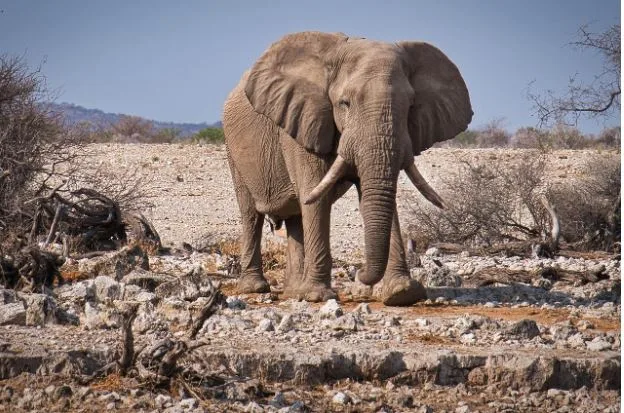Best Nairobi Safari Tour Packages for Wildlife Lovers
Nairobi, the city with a wild heart
Nairobi is a wild city. You see tall buildings and traffic, then just a few minutes’ drive, boom! Lions, rhinos, and zebras running in open land. Nairobi is not only Kenya’s capital, but it is also the gate for real African wildlife. For many travelers, Nairobi is like that mix of modern life and jungle call. If you love animals, this city will give you that.
Wildebeest Migration Nairobi
One of the most famous things around Nairobi is the wildebeest migration. Every year, millions of wildebeest and zebras move across Masai Mara and Serengeti. It’s the world’s biggest animal show, really wild and loud. People travel from far places just to see this. When they cross the Mara River, crocodiles wait, dust rises, and lions watch from the grass. It’s a real nature drama. You can see this from July to October mostly. Some safaris from Nairobi take you to Masai Mara in just a few hours, so you can join the migration scene.
If you stand there, you can feel the ground shake a little and the animals move like one big wave. Guides tell you stories about how they follow rain and green grass. It’s life and death both at the same time. For many, it’s a dream to see that once in life.
Nairobi National Park—Wild Next to the City
Nairobi National Park is one of the most special places on earth. Where else can you see lions with city skyscrapers in the background? It’s only 7 kilometers from the city center. You enter the gate, and city noise is gone, only birds and wind. Inside you find lions, rhinos, giraffes, buffaloes, and even cheetahs sometimes.
People who come for the first time are surprised. They think, No way, wild animals here so near? But yes, they live right there. The park is not huge like Masai Mara, but it has everything. It’s perfect for a half-day or full-day safari if you have a short time.
Morning is the best time, when animals move around before the sun gets hot. You can do early morning game drives or sunset drives too.
Nairobi Safaris Tour Packages
Many tour companies in Nairobi offer different safari packages. Some are short, one day, just Nairobi National Park; others go long, like 3 to 7 days, including Masai Mara, Amboseli, and Lake Nakuru. If you love wildlife but have limited time, a one-day Nairobi safari is great. You can start in the morning, finish by lunch, and still see lions, rhinos, and zebras.
Other Nairobi Safaris Tour Packages take you beyond the city. You go to Amboseli and see elephants with a view of Mount Kilimanjaro. Or Lake Nakuru, famous for flamingos. Some tours include the Giraffe Centre and the David Sheldrick Elephant Orphanage, where you can feed giraffes and baby elephants.
Luxury, mid-range, or budget safaris are all available. Some people like private jeeps; others go for group safaris to share costs. You can book online or in a Nairobi hotel directly. The guides usually know much about animals; they spot them from far away. They tell funny and real stories, so even driving feels alive.
If you stay longer, choose a combo package—maybe 5 days in Masai Mara and Lake Naivasha, or 7 days on a full Kenya safari. You see lions, hippos, leopards, elephants, and birds in big numbers.
Nairobi National Park Entrance Fees
If you want to go by yourself, you can check Nairobi National Park entrance fees. Kenya Wildlife Service (KWS) manages it. For non-residents, the fee is around USD 60 per adult and USD 20 for children. For residents and citizens, it’s cheaper. Sometimes prices change slightly, so it’s best to check before you go.
Also, you need to pay for vehicle entry. Small cars around 300 KES, safari vans, and more. You can pay with an M-Pesa or card at the gate.
If you book through a safari company, the entrance fee is often included in the total price, so you don’t need to worry. But if you plan to self-drive, carry your ID or passport and entry fee ready.
Best Time to Visit Nairobi for Safari
You can visit Nairobi National Park all year, but the best months are from June to September when it’s dry. Animals come near water holes, which are easier to spot. During the rainy season (March to May), grass grows tall, so sometimes animals hide, but still the park looks very green.
If you plan to see the wildebeest migration, go from July to October. December to February is also nice, sunny, and good for photography.
Top Things to Do on a Nairobi Safari Tour
Not only the game drive, Nairobi offers much more for wildlife lovers.
- Giraffe Centre: Feed giraffes with your hand; they lick gently, tall and funny.
- Elephant Orphanage: Small elephants play in mud, and caretakers feed them milk.
- Nairobi Animal Orphanage: inside the National Park, rescued animals you can see closer.
- Nairobi Safari Walk: wooden trail inside park area, good for kids and families.
Some tours mix these places in one day, so you see all the animals and get a close experience.
Wildlife Lovers’ Paradise
If you love nature, Nairobi is like a small heaven. You can wake up, see a lion in the morning, and eat dinner in the city by evening. Few cities in the world give that mix. Photographers love the park; that classic photo of a rhino with the Nairobi skyline is always trending.
Bird watchers also find many species here. Around 400 bird types live in and around the park. From big eagles to tiny sunbirds. During migration, even more come.
Where to Stay in Nairobi for Safari
You find all kinds of stays. Near the park, there are luxury lodges and tented camps. Inside the city, many hotels give quick access to parks. For example, the Ole Sereni Hotel sits right at the edge, and you can see animals from the restaurant sometimes.
Budget travelers also have hostels and guesthouses. If you want a peaceful morning view, stay near Karen or the Langata side. Many safari companies also provide pickup and drop-off from your hotel, so no worry about transport.
Why Choose a Guided Safari?
Some people try self-drive, but a guided safari is better for the first time. The guide knows animal behavior, where they hide, and when to go which route. They also make sure you are safe. Sometimes lions walk near the road, or rhinos cross suddenly, and guides handle it calmly.
Also, you learn a lot from them. They tell you stories about Maasai culture, how animals survive dry months, and how each species connects to others. It makes the trip more meaningful.
Travel Tips for Nairobi Safari
- Always carry a camera and binoculars.
- Wear neutral-colored clothes, not too bright.
- Bring a hat, sunscreen, and water bottle.
- Mornings can be cold, so carry a light jacket.
- Respect animals; never get out of the car unless the guide says.
- Book early during high season; prices go up.
Life Highlight Moment
Standing in an open jeep, seeing a lion walk slowly near your car, heart beating fast but happy. That moment stays with you forever. Nairobi gives those moments easy. You don’t have to travel far deep into the bush; it’s right here near the city.
Short Safari, Big Memories
Even a 3-hour drive in Nairobi National Park can fill your heart. Many travelers say, “I saw more animals here than I thought.” Some even see all of the “Big Five” (lion, rhino, buffalo, leopard, and elephant) if lucky, though elephants are usually outside the park area.
If you continue the safari to Masai Mara or Amboseli, the adventure just grows bigger. Nairobi is the best starting point.
Eco and Conservation Side
Nairobi National Park is also important for conservation. It protects black rhinos, which are endangered. Park staff and rangers work hard to keep poachers away. When you pay the entrance fee, part of it goes to protect wildlife. That’s a good reason to visit and support them.
Final Thoughts
So if you love wildlife, nature, and the real Africa feeling, the Nairobi safari tour is perfect. From short city safaris to long wild adventures, everything starts here. Whether you see wildebeest migration, giraffe kissing, or lions resting in golden grass, every moment counts. Nairobi reminds us that the wild and the city can live side by side.
FAQs
- What animals can I see in Nairobi National Park?
You can see lions, rhinos, zebras, giraffes, buffaloes, and many birds. - How far is Nairobi National Park from the city center?
Only about 7 kilometers, around 20–30 minutes by car. - What is the best time to visit the park?
Early morning or late afternoon, when animals move around most. - Can I see the wildebeest migration from Nairobi?
You can join safari tours from Nairobi to Masai Mara to see migration between July and October. - Do I need to book a safari in advance?
Yes, it’s better to book early, especially in high season, to get a good guide and vehicle.



